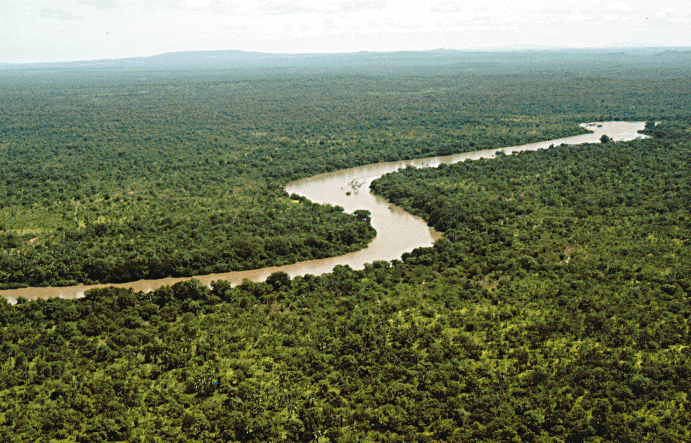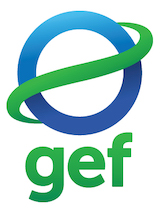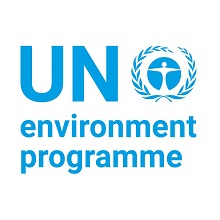Strengthening Climate Information and Early Warning Systems in Gambia
Project Overview
The EWS project in Gambia responded directly to the priorities and actions identified in the NAPA of Gambia, which articulates the need for securing, transferring and installing critical technologies, as well as developing the necessary systems for climate change-related information to permeate into decision-making processes. The technologies required to achieve these aims will increase the capacity of the national early warning network to forewarn and rapidly respond to extreme climate events. The NAPA clearly identifies a priority project on Early Warning Systems (EWS) along with projects associated with Food security, Coastal Zones, Energy, Health, Water resources and Terrestrial ecosystems.
This project (2015 - 2022) was specifically aligned with outcomes linked ncluding increased knowledge and understanding of climate variability and change-induced risks at country level and in targeted vulnerable areas, strengthened adaptive capacity to reduce risks to climate-induced economic losses, successful demonstration, deployment, and transfer of relevant adaptation technology in targeted areas and enhanced enabling environment to support adaptation related technology transfer.
For updates on UNDP Early Warning Systems and Climate Resilient Development projects in Africa, visit the UNDP-EWS Africa Blog.
Project Details
Many countries in Africa suffer from low rates of development. In particular, Gambia is in the lowest 20% of countries worldwide, ranked by both Gross National Income (GNI per capita) and the 2011 United Nations Human Development Index (ranked 168 out of 187 countries)[1]. These countries are particularly vulnerable to climate-related shocks (either to the economy or to unprotected populations), which threaten to undo years of development assistance and asset accumulation, especially within poor populations. One way to help mitigate the impact of these climate-related shocks is to warn populations, businesses and governments in advance of an impending or likely damaging event through an Early Warning System (EWS).
The fundamental problem in many LDC countries such as Gambia is that a complete EWS, which generates knowledge of the risks (vulnerability & hazard), has capacity to monitor, analyze and forecast hazards, provides communication and dissemination of alerts and warnings, either does not exist or does not function as well as it ought to be relevant and useful for long-term planning, management and risk reduction activities. In the Gambia, this status unnecessarily imperils lives and assets, recently for flood victims nationwide[2] and for farmers suffering from drought impacts on cereal production[3]. Reasons for this situation involve a lack of both hard and soft technologies and the capacity to utilise those technologies in an appropriate manner. This results in: i) a limited understanding of current and future risks; ii) limited monitoring and forecasting of climate-related hazards; iii) inappropriate communication and packaging of warnings; iv) restricted responses to impending disasters and v) constrained planning for slow-onset changes due to climate change that will require a transformational shift in economic development and risk reduction efforts. The infrastructure and technology on which to build a fully operational EWS for the Gambia including these services cannot be fully met from the existing GOTG/GEF/UNEP Project on the development of an effective national early warning system which has set the foundations for a EWS in the Gambia. An assessment of needs for EWS in the Gambia under the above project shows that the current GEF/LDCF funding is inadequate to provide the required ints to calculate these statistics from observations). Statistically significant trends in historical rainfall indicate decreases during the main rainy season from July to September. Future projections of rainfall also suggest a likely decrease in rainfall during the June to September period, though maximum daily rainfalls are likely to increase.
These hazardous events often lead to impacts on food security and health such as those seen recently5. Whereas flooding due to heavy rainfall over a short period of time has wreaked havoc in both urban and rural (river basins/watersheds) environments, with attendant impacts on health and the spread of disease4. Whilst the upswing in deaths attributed to floods in recent years may largely be due to population dynamics[5], many deaths can be avoided with sufficient early warning. These risks and associated losses are expected to increase in some regions due to the increased availability of atmospheric moisture and intensity of rainfall in the future[6].
Severe weather, associated with convective weather, atmospheric heating and moisture, will likely increase in many regions and can result in increases in rain, hail and winds, all of which are damaging to crops and infrastructure. Sea level rise is a problem for many low lying coastal areas, such as Banjul[7], where large populations often assemble and the slow and steady rise of mean sea level results in more frequent flooding and coastal erosion. Rises in temperature which affects all regions, results in an increase in the frequency of heat waves and extremely hot days/nights, which in turn affect the health of humans, ecosystems and urban environments.
Changes in the above climate-related hazards will negatively affect a range of sectors. Of particular concern is the agricultural sector which is an important component of the economy absp;
Key Results and Outputs
Project Objective: To strengthen the climate monitoring capabilities, early warning systems and available information for responding to climate shocks and planning adaptation to climate change in Gambia.
Component 1: Infrastructure, technologies, equipment and human resources requirements to enable EWS functionality and sustainability
- Outcome 1.1: The Gambia National Meteorological Services is transformed into a full-fledged Meteorological Agency
- Output 1.1.2: Communication equipment and technologies procured and installed at the Meteorological Agency to enable data and information archiving and dissemination with regional centres and the Central Forecast Office
- Output 1.1.1: All the Administrative and Technical Units of the National Meteorological Services are centralized at one location in Banjul International Airport
- Outcome 1.2: Hydro-meteorological infrastructure is installed that will cover the full needs for 'optimal performance of EWS' as identified by recent needs assessment reports in the Gambia
- Output 1.2.1: The infrastructure of the existing meteorological and hydrological networks are upgraded to meet the required operational standard of the Early Warning System
- Output 1.2.2: A network of 5 Pilot balloon/upper air stations is developed and operational
- Output 1.2.3: A Marine Meteorological Station Network is developed and operational
- Output 1.2.4: Institutionalize the monitoring and recording of and reporting on wildlife and biodiversity species diversity and spatial variability
- Output 1.2.5: The national water quality monitoring and reporting system is upgraded and operational
- Outcome 1.3: Optimum critical mass of human resources is put in place for the operation of the Gambia Early Warning System beyond the Pilot project
- Output 1.3.1: The critical mass of human capital and capacity required for the establishment of the appropriate climate and climate change early warning systems is developed
Component 2: Climate information integrated into development plans and early warning systems
- Outcome 2.1: Efficient and effective use of hydro-meteorological and environmental information for making early warnings and long-term development plans
- Output 2.1.1: Baseline studies under the 1st Phase of the EWS are updated to determine sector-specific user needs and develop tailored sector-specific early warning products
- Output 2.1.2: National capacity for assimilating forecasts and mainstreaming them into existing development planning is built
- Output 2.1.3: Communication channels, strategies and procedures for issuing climate change early warning products are enabled
- Output 2.1.4: Plan for sustainable financing of the operation and maintenance of the installed EWS developed and implemented
Reports and Publications
Project Brief / Fact Sheet
Monitoring and Evaluation
Project Start:
Project Inception Workshop: will be held within the first 2 months of project start with those with assigned roles in the project organization structure, UNDP country office and where appropriate/feasible regional technical policy and programme advisors as well as other stakeholders. The Inception Workshop is crucial to building ownership for the project results and to plan the first year annual work plan.
Daily:
Day to day monitoring of implementation progress: will be the responsibility of the Project Manager, based on the project's Annual Work Plan and its indicators, with overall guidance from the Project Director. The Project Team will inform the UNDP-CO of any delays or difficulties faced during implementation so that the appropriate support or corrective measures can be adopted in a timely and remedial fashion.
Quarterly:
Project Progress Reports (PPR): quarterly reports will be assembled based on the information recorded and monitored in the UNDP Enhanced Results Based Management Platform. Risk analysis will be logged and regularly updated in ATLAS.
Annually:
Annual Project Review/Project Implementation Reports (APR/PIR): This key report is prepared to monitor progress made since project start and in particular for the previous reporting period (30 June to 1 July). The APR/PIR combines both UNDP and GEF reporting requirements.
Periodic Monitoring through Site Visits:
UNDP CO and the UNDP RCU will conduct visits to project sites based on the agreed schedule in the project's Inception Report/Annual Work Plan to assess first hand project progress. Other members of the Project Board may also join these visits. A Field Visit Report/BTOR will be prepared by the CO and UNDP RCU and will be circulated no less than one month after the visit to the project team and Project Board members.
Mid-Term of Project Cycle:
Mid-Term Evaluation: will determine progress being made toward the achievement of outcomes and will identify course correction if needed. It will focus on the effectiveness, efficiency and timeliness of project implementation; will highlight issues requiring decisions and actions; and will present-Disposition: form-data; name="field_project_monitoring[und][0][format]" full_html






